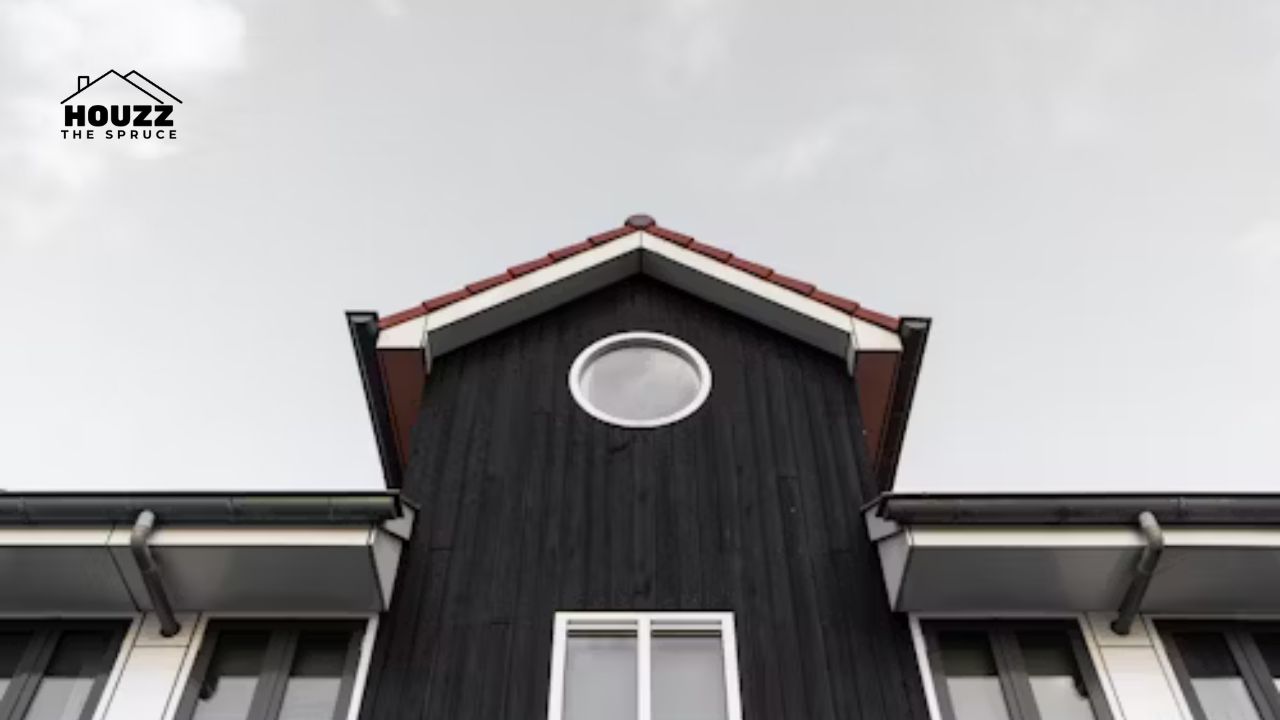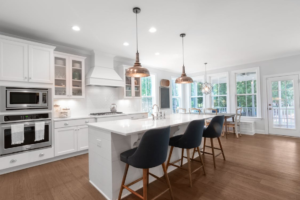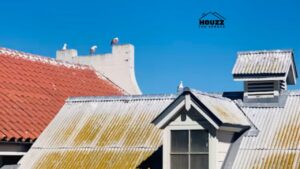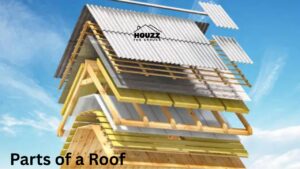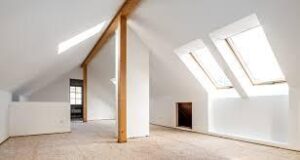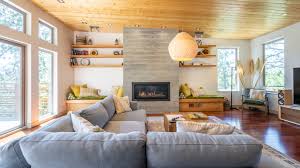Have you ever stood outside on a rainy day, looked up at a building, and wondered how water doesn’t just rush down the walls like a waterfall? That’s because builders are sneaky-smart. They use little design tricks to keep the rain where it belongs — away from your walls. One of those clever tricks is called a roofing cop.
Now, before you imagine a policeman standing guard with a whistle on top of your house, let me explain. The word “cop” here doesn’t mean a police officer. In building talk, copping roofing or copping roof refers to the protective cap or cover that sits on the very top edge of a wall or parapet. Think of it like a hat for your house. Just like you wouldn’t go out in a storm without a hat or umbrella, a building shouldn’t face rain or snow without a roofing cop to protect it.
But here’s where it gets funny — when you search the term online, you also find stories about a cop on a roof, or even “cops on the roof Dunkin Donuts.” Yes, those are real phrases people search for! And they don’t mean the same thing at all. They’re about fundraising events where police officers literally climb onto roofs of donut shops to raise money for charity. Imagine driving by and seeing a cop on the roof Dunkin sign — you’d probably honk, laugh, and maybe even grab a dozen donuts.
So let’s break this down in a way that makes sense. In this article, we’ll cover both the building side of things (like roofing cop, copping roofing, and why your house needs one) and the fun cultural side (like “cop on a roof with shooter” headlines or when an acorn hits roof of cop car and suddenly it’s in the news). Sounds like a wild mix, right? Don’t worry, I’ll keep it clear and entertaining.
Why Do We Even Need a Roofing Cop?
Imagine if rainwater could slide straight into the top of your house walls. Over time, water would sneak inside, weaken the structure, cause cracks, and eventually your walls might crumble. That’s where a roofing cop comes in.
A roofing cop is like the helmet of your house. It covers the top edge, keeps the walls safe, and gives the whole building a nice, finished look. Builders sometimes call it coping or parapet capping. Without it, you’d be inviting water damage, mold, and even critters into your home.
And let’s be honest, nobody wants a soggy wall or a house that looks half-finished. That’s why a roofing cop is both protective and stylish. It’s one of those little details you don’t notice until it’s missing.
When “Cop on a Roof” Means Something Totally Different
Now, let’s pause the house talk for a second. Have you ever heard of the phrase “cop on a roof”? It sounds like the start of a silly joke, but it’s actually been used for years in the U.S. during charity events. Police officers climb onto roofs — sometimes donut shops (hence “cop on the roof Dunkin Donuts”) — to raise money for good causes.
You might also see “cop on a roof top” or “cop on car roof” in the news when something unexpected happens. Like one time, a cop fell off roof while chasing a suspect (don’t worry, he was okay), and another time when an acorn hits roof of cop car and made headlines in a small town. These phrases show how “cop” and “roof” pop up in funny and serious ways outside of construction.
So yes — when you see “cops on the roof” online, it might be about charity, donuts, or even dramatic events. But in the building world, it’s all about protecting your home.
Roofs, Cops, and… Cars?
Here’s another twist. People also ask questions like:
- Do cop cars have roof racks?
- Do cop explorers have roof racks?
- Do cop Ford Explorers have roof racks?
- Do undercover cop cars have roof racks?
- Why do cop cars not have roof racks?
- Why do cop cars not have roof rails?
At first, that might sound like a strange detour, but it makes sense. Just like a roofing cop protects your house, a roof rack protects your storage needs on top of your car. But most police vehicles, including Explorers and undercover cars, don’t have roof racks or rails. Why? Because racks get in the way of emergency lights, sirens, and stealth. Plus, police don’t need to strap surfboards or suitcases to the top of their cruisers — they’re busy enough!
So if you ever see “cop on roof with shooter” in a news headline, it usually means officers are up there for tactical reasons, not to adjust a roof rack.
Clearing the Confusion
It’s easy to see why people get mixed up with the term roofing cop. It can mean:
- A building feature that protects your walls and roof edges.
- A police officer literally standing on a roof (usually at charity events like cop on a roof Dunkin).
- A weird news story, like when a cop fell off roof or when someone spotted a cop on car roof.
- Questions about cop cars and roof racks, which — spoiler — they usually don’t have.
So, when writing or researching, it’s super important to figure out what the person actually means. Are they a homeowner worried about water damage? Or are they looking for that funny photo of a cop on a roof Dunkin Donuts fundraiser?
Roofing Cop vs. Roofing V Cope (The Oddball Question)
Here’s another curious search: ow grun roofing v cope. While it looks like a jumbled phrase, what people usually want to know is the difference between roofing in general and coping specifically. To put it simply: roofing is the big umbrella (literally and figuratively) that covers your house, while coping (the roofing cop) is a small but mighty part that protects the top edges.
Think of it like this: roofing is the superhero, and the roofing cop is the superhero’s trusty sidekick who makes sure no villain (a.k.a. rainwater) sneaks in from the sides.
Why This All Matters
At first glance, the words roofing cop, cop on roof, or “cops on the roof Dunkin Donuts” might seem unrelated. But they all connect to one simple truth: roofs are important. Whether it’s keeping your home dry, helping raise money for a good cause, or giving us hilarious headlines when an acorn hits roof of cop car, roofs and “cops” together always grab attention.
By the time you finish this guide, you’ll not only know what a roofing cop does for your home but also understand why people love talking about cops on the roof — whether they’re protecting, fundraising, or simply making us laugh.
Quick Recap for You:
- A roofing cop is the protective cap on top of a wall/roof edge.
- “Cop on a roof Dunkin” = charity events where police stand on roofs of donut shops.
- Do cop cars have roof racks? No — and there are practical reasons why.
- Cop fell off roof and “cop on roof with shooter” are real headline scenarios.
- Whether it’s building safety or funny stories, roofs + cops = always memorable.
Types & Materials of Roofing Cop
Okay, now that we’ve cleared up the whole roofing cop vs cop on a roof confusion, let’s get serious (but still fun) about the building side of things. If Section 1 was about what a roofing cop is, this section is all about what it’s made of. Spoiler: not donuts, even if we keep talking about “cops on the roof Dunkin Donuts.”
A roofing cop comes in different types and materials, each with its own personality. Some are tough like a cop on roof with shooter (standing strong no matter what), while others are stylish and fancy, more like a shiny police cruiser without a roof rack.
Let’s go through the main types one by one so you’ll know which one works best for your house.
1. Metal Roofing Cop – The Tough Protector
If the world of building had superheroes, metal copping roofing would be Superman. Strong, shiny, and able to take a beating from rain, wind, and snow.
- Aluminum: Lightweight, rust-resistant, and easy to install. Perfect if you want protection without adding weight to your walls.
- Steel: Galvanized steel is a classic choice. Tough, long-lasting, and dependable, like a cop on roof top keeping watch over the city.
- Copper: Beautiful and classy. Over time, it turns that cool green color you see on old buildings. Expensive? Yes. Worth it? Also yes.
- Stainless Steel: When you need something sleek, shiny, and resistant to corrosion.
Metal roofing cop is like having a police officer who never sleeps. It’s durable, low-maintenance, and works in almost any climate.
2. Stone Roofing Cop – The Ancient Guard
Stone is old-school. Think castles, cathedrals, and those grand historic buildings where you’d imagine knights and maybe even a cop on a roof keeping watch.
- Limestone or Sandstone: Classic, natural, and blends well with older architecture.
- Granite: Hard as nails (or harder). It’s the bodyguard of the roofing world.
The downside? Stone is heavy. Imagine a cop on car roof—the car would sag, right? That’s how walls feel if they’re not strong enough to hold heavy stone coping. But when used right, it’s stunning and lasts for centuries.
3. Concrete Roofing Cop – The Budget Hero
Concrete copping roofing is like the everyday police officer: reliable, affordable, and everywhere.
- Precast Concrete: Made in molds, so you can choose different shapes and designs.
- Cast-in-place Concrete: Poured right on your wall top.
Concrete is tough and cheap, but it can crack if not maintained. Think of it like when an acorn hits roof of cop car — small impact, but over time, enough little hits can cause problems.
4. Brick or Masonry Roofing Cop – The Traditionalist
Brick coping is like that classic cop car without roof racks — simple, recognizable, and dependable. It matches well if your building already has brick walls, keeping the design consistent.
- Single Brick Coping: Just one layer of bricks across the top.
- Double Brick Coping: Two layers for extra protection.
But bricks can soak up water if they’re not sealed properly. That’s like a cop fell off roof moment — not the kind of surprise you want.
5. Synthetic or Composite Roofing Cop – The Modern Innovator
New times call for new tricks. Synthetic materials (like fiberglass, PVC, or engineered composites) are becoming more popular. They’re lightweight, low-maintenance, and sometimes designed to look like stone or metal without the heavy cost.
Think of it as the undercover cop of roofing — blending in, low-key, but still getting the job done. Or like those undercover cop cars without roof racks — you don’t even notice them until they’re right there beside you.
6. Wood Roofing Cop – Rare but Rustic
Wood coping is less common today, but sometimes you’ll see it in cabins, cottages, or rustic homes. It gives a natural look, but let’s be real — wood doesn’t love rain. Unless treated properly, it can rot faster than you can say “cop on roof Dunkin.”
So if you want wood, prepare for regular maintenance. Otherwise, you’ll end up replacing it quicker than police swap out cars without roof rails.
Choosing the Right Material: Things to Think About
Alright, so how do you pick the best roofing cop material for your home? Here’s a quick checklist:
- Climate – Live somewhere rainy or snowy? Go with metal or concrete.
- Budget – Want the affordable route? Concrete or brick.
- Aesthetics – Want to impress? Stone or copper all the way.
- Maintenance – Hate fixing things? Composite or stainless steel.
- Strength of Walls – Heavy materials like stone need strong walls, or you’ll risk a disaster worse than a cop on roof with shooter moment.
Funny But True: Materials in Pop Culture
It’s wild how the term roofing cop keeps mixing with stories about real officers. But here’s a thought: if a cop on a roof Dunkin Donuts fundraiser were to choose coping material, they’d probably go with concrete — because it’s reliable and affordable, just like their community service.
And if you’ve ever wondered why do cop cars not have roof racks or why do cop cars not have roof rails, here’s a quirky connection: just like cop cars don’t need extra luggage on top, your home doesn’t need unnecessary extras either. The right roofing cop is all about functionality — not fancy add-ons that get in the way.
Final Thoughts on Materials
Choosing the right roofing cop is like choosing the right officer for a mission:
- Metal is the fearless protector.
- Stone is the ancient guard.
- Concrete is the budget hero.
- Brick is the traditionalist.
- Synthetic is the undercover pro.
- Wood is the rustic adventurer.
Each has pros and cons, but they all serve the same purpose — protecting your walls and keeping your home safe. And while the internet may still serve you results about a cop on roof, or whether cop explorers have roof racks, you’ll now know the real deal: in construction, a roofing cop is simply the crown that keeps your home dry and dignified.
Design & Profiles of Roofing Cop
When we talk about roofing cop, it’s not just about a roof itself — it’s about the style, profile, and design that makes it stand out. Roofs aren’t one-size-fits-all. Some are sharp and edgy, while others are smooth and subtle. And just like seeing a cop on a roof (something that always sparks curiosity), the design of a roof instantly grabs attention.
Let’s explore the most popular designs and profiles you’ll come across when thinking about copping roof or copping roofing options.
1. Classic Flat Roofs
Flat roofs are one of the simplest profiles in roofing design. Despite their name, they’re never completely flat — they have a small slope to allow water drainage.
- Pros: Easy to build, affordable, and perfect for commercial buildings.
- Cons: Can require more maintenance because water sometimes lingers.
It’s kind of like spotting a cop on car roof during a chase scene — unexpected, but it gets the job done.
2. Gable Roofs
The triangular, pointy ones you often draw as a kid? Yep, those are gable roofs.
- Why people love them: They’re stylish, simple, and great for rain or snow.
- Where you’ll see them: Suburban homes and classic neighborhoods.
Just like the buzz around cops on the roof Dunkin Donuts fundraisers, gable roofs are instantly recognizable and loved by many.
3. Hip Roofs
Unlike gable roofs that have two sloping sides, hip roofs have four. They’re sturdy and handle storms better.
- Benefit: With slopes on all sides, wind doesn’t stand a chance.
- Downside: More materials = slightly higher cost.
It’s a “secure choice” — kind of like the strong image of a cop on roof with shooter, taking control of a situation.
4. Mansard Roofs
Think Paris. Mansard roofs are elegant and stylish, with two slopes on each side.
- Why it’s unique: They give you extra living space in the attic.
- Where you’ll see them: French-style homes, historic districts.
Much like a cop on a roof Dunkin event, mansard roofs stand out and leave people talking.
5. Shed Roofs
A single slope, simple and modern.
- Best for: Modern homes, tiny houses, and outdoor sheds.
- Why people choose it: Minimalist look and good for solar panels.
It’s the “no-frills” option, like wondering do cop cars have roof racks — simple question, simple answer.
6. Curved Roofs
Want something futuristic? Curved roofs are sleek, modern, and often used in big stadiums or contemporary homes.
- Style points: Bold and eye-catching.
- Functionality: Helps with wind flow.
It’s like spotting a cop on a roof top — not your everyday view, but unforgettable when you see it.
7. Green & Eco Roofs
Yes, some roofs literally grow plants. Eco-roofs are becoming more popular with people who care about the planet.
- Benefit: Insulation + sustainability + beauty.
- Drawback: Requires maintenance and a strong base.
And just like acorn hits roof of cop car can make a funny headline, green roofs create a buzz that people don’t forget.
Profiles & Styles in Roofing Cop
When choosing your roofing cop design, the profile matters just as much as the material. Here are the most common roof profiles:
- Corrugated profile: Wavy lines, lightweight, affordable.
- Ribbed profile: Sharp lines, modern look, strong.
- Tile profile: Mimics clay tiles but often made of metal for durability.
- Flat panel: Sleek, minimalist, great for modern builds.
Each design profile has its “character,” kind of like the different stories tied to a cop on a roof Dunkin or whether do undercover cop cars have roof racks — each one has its unique purpose.
The Human Side of Roof Design
Roofs aren’t just about practicality — they carry emotion and identity. Seeing a cop fell off roof is shocking because it’s unexpected, just as an unusual roof design makes you stop and stare. And asking why do cop cars not have roof racks or why do cop cars not have roof rails shows how much little details matter — details that can make or break functionality.
Choosing the right roofing cop profile is the same: the small things matter, whether it’s curves, slopes, or edges.
Blending Style with Function
The best roof design blends beauty with strength. A cop on roof Dunkin fundraiser might look fun, but it serves a real purpose — supporting a cause. In the same way, your roof’s design isn’t just decoration. It protects, insulates, and defines your home’s character.

